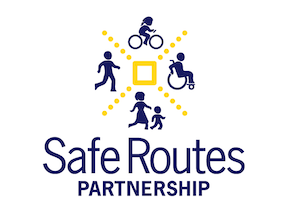San Francisco is the first city in the country to combine mapped hospital data with police injury data to analyze spatial patterns of severe and fatal injuries to target interventions in support of Vision Zero goals.
Key takeaway:
- San Francisco is the first city in the country to combine mapped hospital data with police injury data to analyze spatial patterns of severe and fatal injuries to target interventions in support of Vision Zero goals. This report describes the methodology the San Francisco Department of Public Health used to identify areas with high concentrations of severe traffic injuries and fatalities, which will be useful for other cities pursuing transportation safety improvements.
Results:
- The San Francisco Department of Public Health’s Program on Health, Equity and Sustainability (PHES) developed the Vision Zero High Injury Network in consultation with the San Francisco Municipal Transportation Agency (SFMTA) in 2015 and represents a snapshot in time (2013 – 2015) where severe and fatal injuries were most concentrated based on injury counts. It isn’t an assessment of whether a specific street or location is dangerous and may not cover locations with high numbers of less severe injuries.
- Since the creation of the Vision Zero High Injury Network, SFMTA, the San Francisco Police Department (SFPD), and the San Francisco Department of Public Health (SFDPH) have enabled data sharing across relevant departments to develop a comprehensive Transportation-related Injury Surveillance System (TISS) that combines police data with hospital records to provide a more holistic picture of traffic injuries and fatalities.
- The 2017 Vision Zero High Injury Network Update seeks to provide a more comprehensive, multi-modal picture of collisions leading to injury or death on San Francisco streets. Specifically, there are four main improvements:
- Clinical assessment of injury severity based on TISS hospitalization data to improve the accuracy of injury severity assessment for SFPD-reported traffic injuries.
- Inclusion of people severely injured and treated at ZSFG but not reported in SFPD data, since not all traffic injuries are reported to the police.
- Standardized analytic approach and improved geospatial analysis to identifying crash-heavy corridors.
- One severe/fatal injury network for all transportation modes.
- Combining SFDPH data with SFPD data fills important gaps since people who are injured on the road may seek medical attention but fail to report it to the police:
- 33 percent of bicyclists with severe injuries are seen at ZSFG but don’t report to SFPD.
- 28 percent of pedestrians with severe injuries are seen at ZSFG but don’t report to SFPD.
- 39 percent of people in vehicles with severe injuries are seen at ZSFG but don’t report to SFPD.
- In San Francisco, sections of streets with the highest number of severe and fatal injuries account for a disproportionate amount of the total number of severe and fatal injuries citywide. For instance, about ten percent of all severe and fatal injuries in the city occur within five city street miles (just half a percent of total miles).
Implications:
- Vision Zero and other transportation safety improvements require extensive stakeholder engagement and inter-department/agency collaboration. This means recognizing that different parties may have different terminology or ask different questions in pursuit of the same information, and being able to transcend those differences in jargon to establish a common language, framework, and/or database to facilitate effective information circulation and collaboration.
Methods:
PHES, SFMTA, SFPD, and the Controller’s Office collaborated to release an updated map of the Vision Zero High Injury Network that accounts for severe and fatal injuries across different transportation modes (i.e., driving, walking, bicycling, public transit, etc.). To identify areas with high concentrations of severe traffic injuries and fatalities, the researchers combined hospital and emergency medical service records with police reports of traffic injuries and collisions, and performed geospatial analysis.
San Francisco Department of Public Health – Program on Health, Equity, and Sustainability. (2017). Vision Zero High Injury Network: 2017 Update – A Methodology for San Francisco, California.

